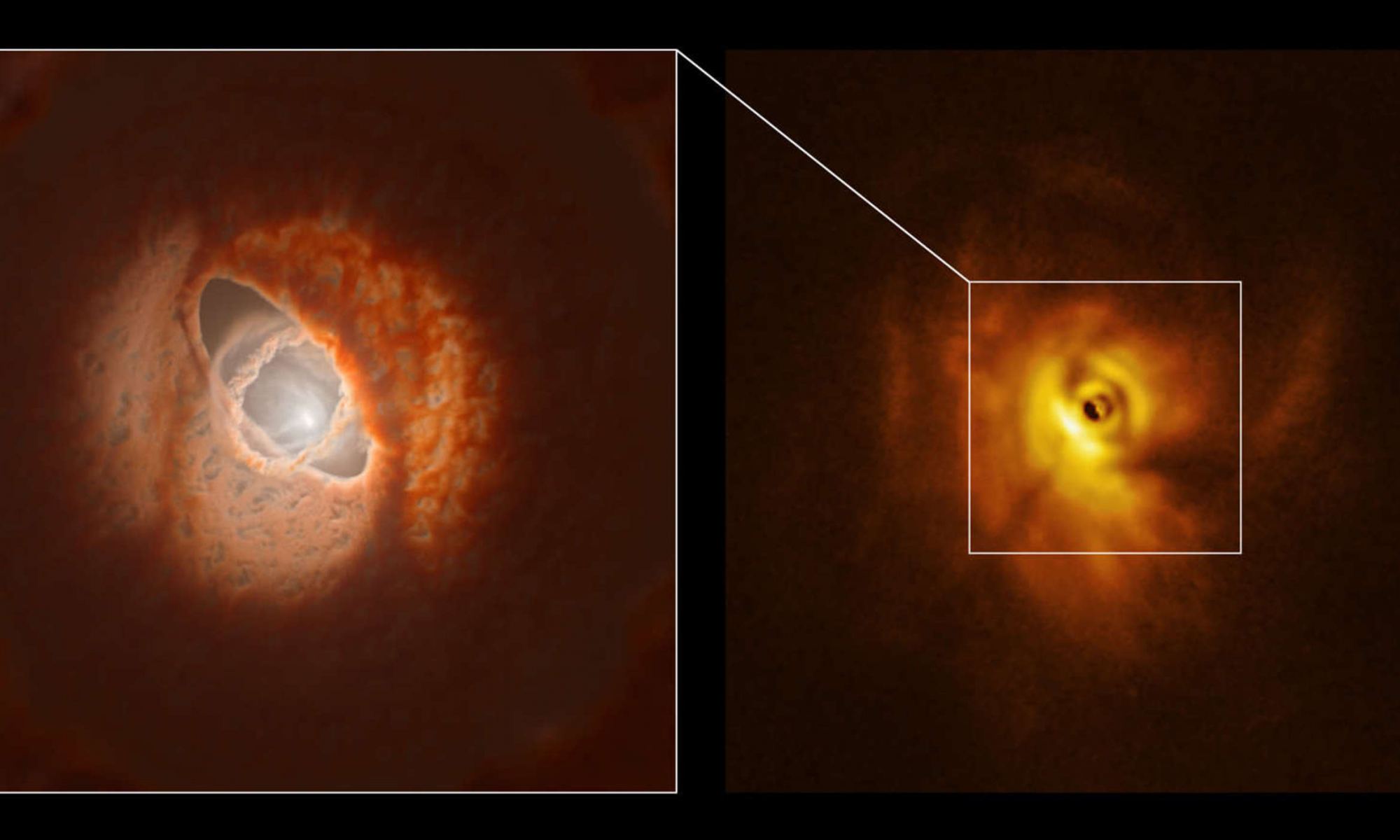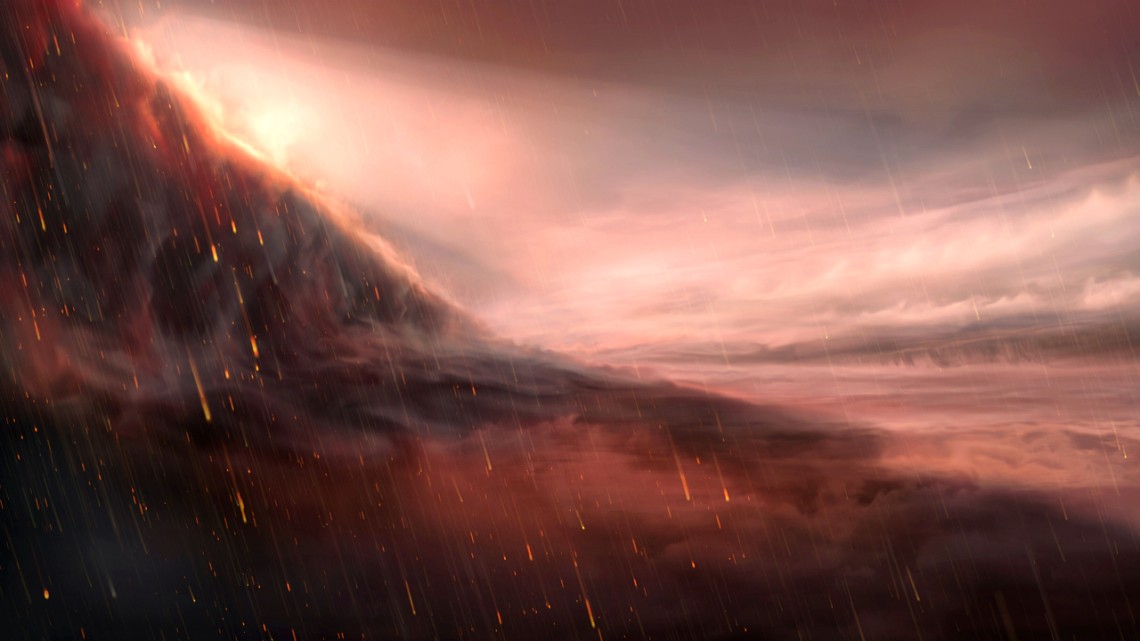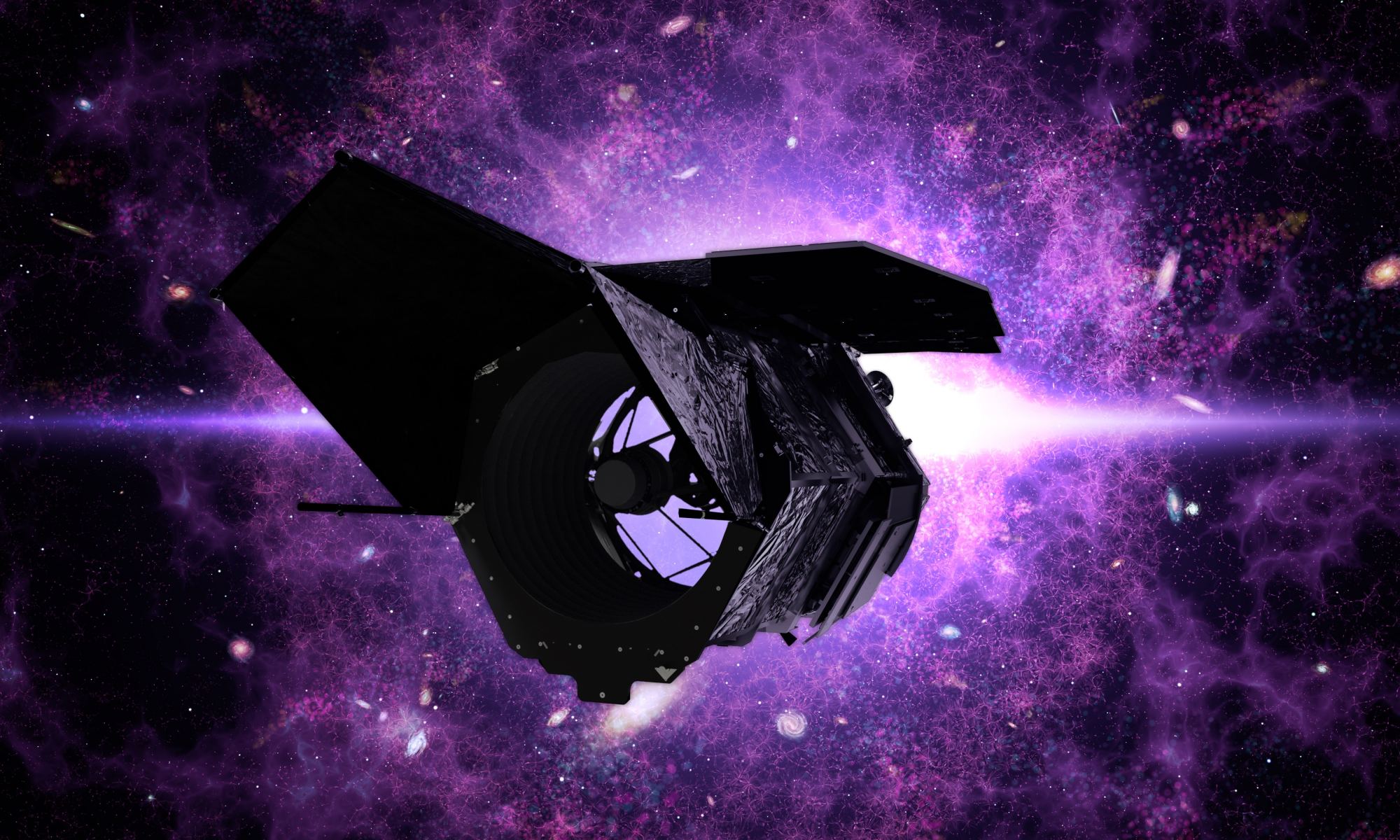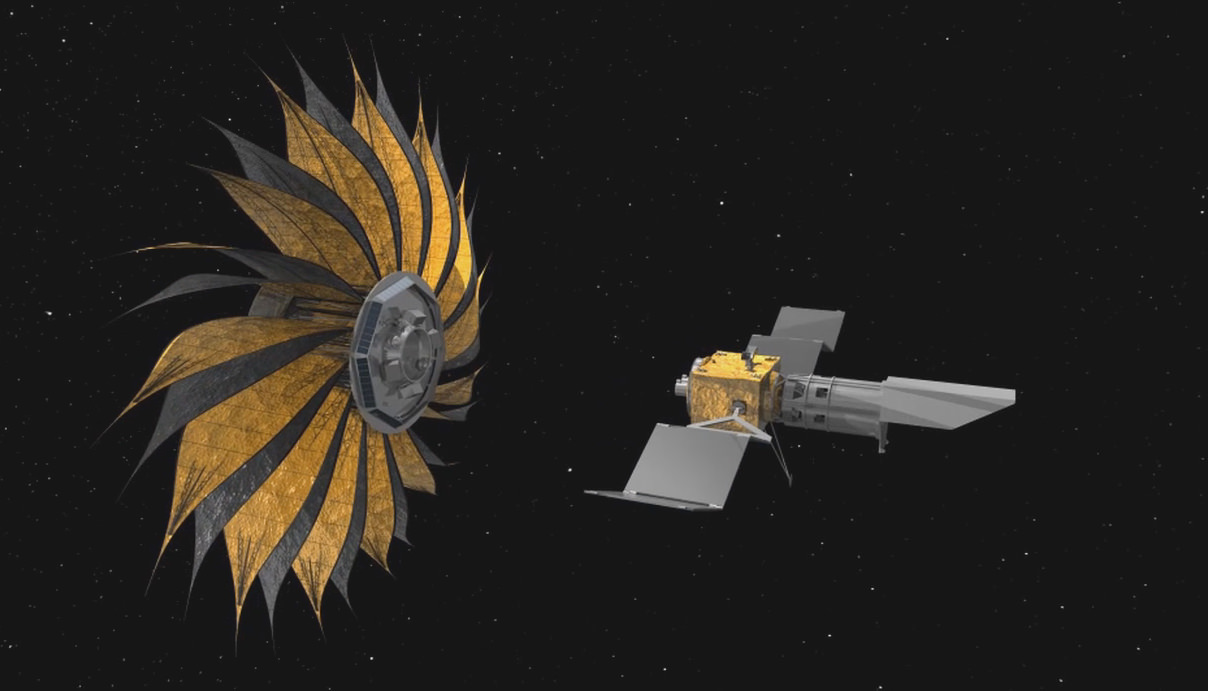It’s a hat-trick! Astronomers may have spotted the first ever known planet orbiting not one, not two, but three stars.
Continue reading “Rare Planet Found Orbiting Three Stars”Rare Planet Found Orbiting Three Stars


It’s a hat-trick! Astronomers may have spotted the first ever known planet orbiting not one, not two, but three stars.
Continue reading “Rare Planet Found Orbiting Three Stars”
WASP-76b is an ultra-hot Jupiter about 640 light-years away from Earth in the constellation Pisces. A few years ago it gained notoriety for being so hot that iron falls as rain. It’s tidally locked to its star, and the planet’s star-facing hemisphere can reach temperatures as high as 2400 Celsius, well above iron’s 1538 C melting point.
Scientists have been studying the planet since its discovery in 2013, and new evidence suggests that it’s even hotter than thought. But, almost disappointingly, there might be no iron rain after all.
Continue reading “An Exoplanet Reaches 2400 C in One Hemisphere. Does it Really Rain Iron?”
We have discovered thousands of exoplanets in recent years, including some that are Earth-sized and potentially habitable. But we haven’t seen many of those worlds. Most of the exoplanets we’ve found have been discovered using the transit method, which involves watching the brightness of a star dip as a planet passes in front of it. We can learn the size and sometimes the mass from these dips, but we have no idea what the world looks like, or whether it has a breathable atmosphere.
Continue reading “Future Telescopes Could be Seeing the Wrong Planets”
We’d love to find another planet like Earth. Not exactly like Earth; that’s kind of ridiculous and probably a little more science fiction than science. But what if we could find one similar enough to Earth to make us wonder?
How could we find it? We progress from one planet-finding mission to the next, compiling a list of planets that may be “Earth-like” or “potentially habitable.” Soon, we’ll have the James Webb Space Telescope and its ability to study exoplanet atmospheres for signs of life and habitability.
But one new study is focusing on exomoons and the role they play in a planet’s habitability. If we find a Moon-like exomoon in a stable orbit around its planet, could it be evidence that the planet itself is more Earth-like? Maybe, but we’re not there yet.
Continue reading “A New Way to Search for Exomoons”
All hail the occulter: an orbiting starshade for ground-based telescopes.
Continue reading “Ground-Based Observatories Could use Starshades to see Planets too”When it comes to finding exoplanets, size matters, but so does weight. The larger and heavier the planet, the more likely they will be discovered by the current crop of telescopes. Both the techniques to find exoplanets and the telescopes using those techniques are biased toward larger, heavier planets. So when even the current crop of telescopes manages to find one that is about half the mass of Venus, it is cause for celebration. That is precisely the size of the planet a team from the European Southern Observatory’s Very Large Telescope has found orbiting a star called L98-59.
Continue reading “Rocky Planet Found With Only Half the Mass of Venus”The only known life in the universe lives on a mid-size rocky planet that orbits a mid-size yellow star. That makes our planet a bit unusual. While small rocky planets are common in the galaxy, yellow stars are not. Small red dwarf stars are much more typical, making up about 75% of the stars in the Milky Way. This is why most of the potentially habitable exoplanets we’ve discovered orbit red dwarfs.
Continue reading “Good News! Red Dwarfs Blast Their Superflares out the Poles, Sparing Their Planets From Destruction”Tracking exoplanets is hard – especially when that exoplanet is so far away from its parent star that the normally used “transit” method of watching it dim the light of the star itself is ineffectual. But it really helps if the planet is huge, and has its own infrared glow, no matter how far away from its star it might be. At least those properties allowed a team of scientists from the University of Hawai’i to track a particular exoplanet called (and we’re not kidding) Coconuts-2b.
Continue reading “Astronomers Find a Huge Planet Orbiting its Star at 6,000 Times the Earth-Sun Distance”Planetary formation is a complicated, multilayered process. Even with the influx of data on exoplanets, there are still only two known planets that are not yet fully formed. Known as PDS 70b and PDS 70c, the two planets, which were originally found by the Very Large Telescope, are some of the best objects we have to flesh out our planetary formation models. And now, one of them has been confirmed to have a moon-forming disk around it.
Continue reading “Incredible! Astronomers see a Moon-Forming Disk Around a Newly Forming Planet”Earth is perfectly suited for organic life. It stands to reason then that similar worlds orbiting distant stars might also be rich with life. But proving it will be a challenge. One of the better ways to discover extraterrestrial life will be to study the atmospheres of inhabited exoplanets, but Earth is fairly small for a planet and has a thin atmosphere compared to larger worlds. It will be much easier to study the atmospheres of gas planets, but could such worlds harbor life? A new paper in Universe argues it could.
Continue reading “Could Life Exist in the Atmosphere of a sub-Neptune Planet?”